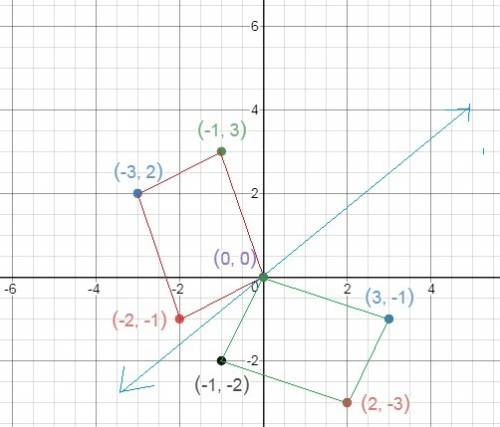
Mathematics, 07.10.2019 03:30 angel234wilcox
The vertices a(–2, –1), b(–3, 2), c(–1, 3), and d(0, 0) form a parallelogram. the vertices a’(–1, –2), b’(2, –3), c’(3, –1), and d’(0, 0) are the image of the parallelogram after a sequence of transformations. which sequence of transformations could produce the image from the pre-image?

Answers: 3


Another question on Mathematics

Mathematics, 21.06.2019 19:10
Which graph represents the function g(x) = |x + 4| + 2?
Answers: 1

Mathematics, 21.06.2019 21:00
What is the similarity ratio of a cube with volume 729m^3 to a cube with volume 3375 m^3
Answers: 2


Mathematics, 21.06.2019 22:30
Which of the following represents the length of a diagonal of this trapezoid?
Answers: 1
You know the right answer?
The vertices a(–2, –1), b(–3, 2), c(–1, 3), and d(0, 0) form a parallelogram. the vertices a’(–1, –2...
Questions














Computers and Technology, 27.11.2019 22:31









